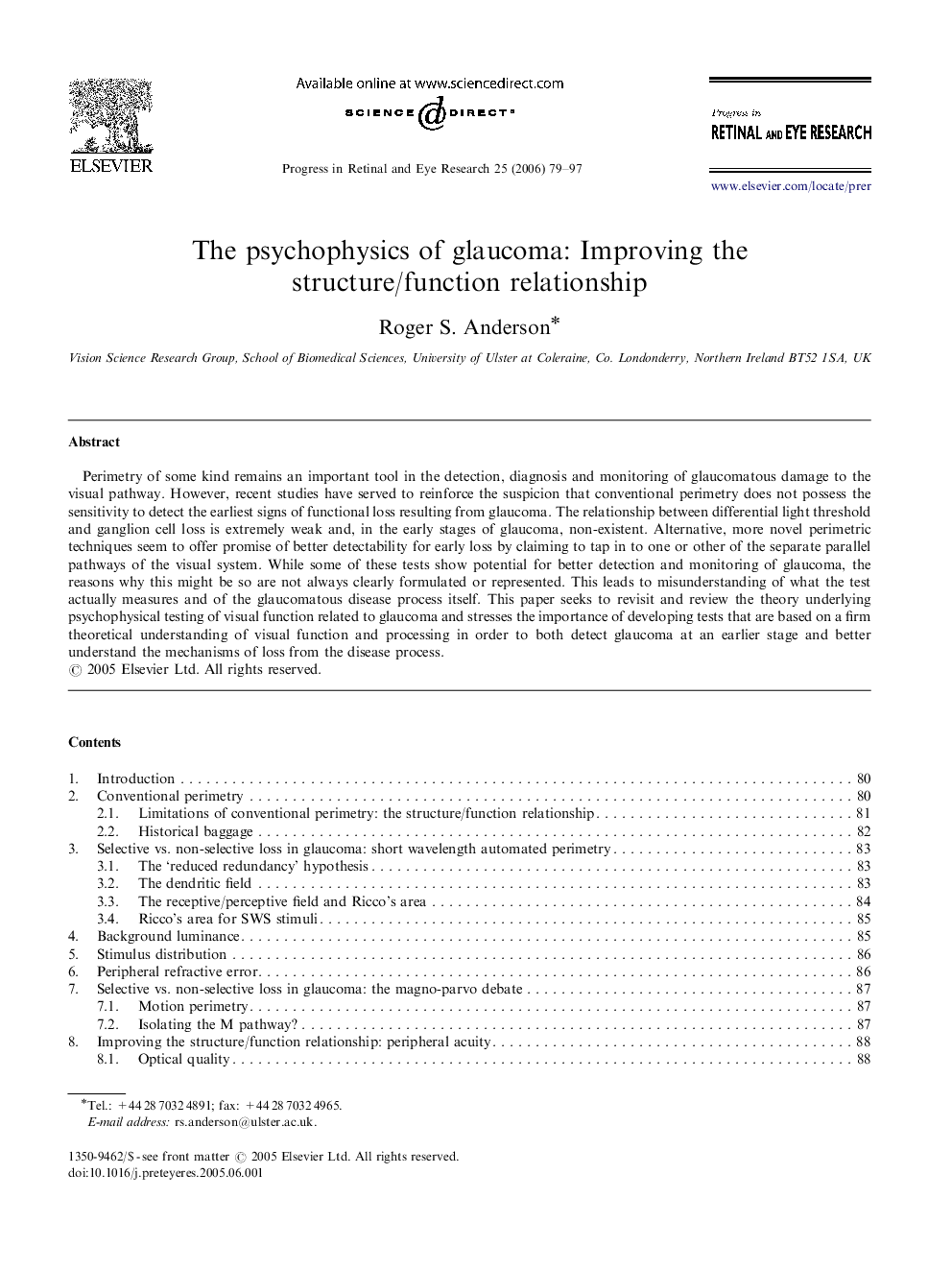| Article ID | Journal | Published Year | Pages | File Type |
|---|---|---|---|---|
| 4032165 | Progress in Retinal and Eye Research | 2006 | 19 Pages |
Perimetry of some kind remains an important tool in the detection, diagnosis and monitoring of glaucomatous damage to the visual pathway. However, recent studies have served to reinforce the suspicion that conventional perimetry does not possess the sensitivity to detect the earliest signs of functional loss resulting from glaucoma. The relationship between differential light threshold and ganglion cell loss is extremely weak and, in the early stages of glaucoma, non-existent. Alternative, more novel perimetric techniques seem to offer promise of better detectability for early loss by claiming to tap in to one or other of the separate parallel pathways of the visual system. While some of these tests show potential for better detection and monitoring of glaucoma, the reasons why this might be so are not always clearly formulated or represented. This leads to misunderstanding of what the test actually measures and of the glaucomatous disease process itself. This paper seeks to revisit and review the theory underlying psychophysical testing of visual function related to glaucoma and stresses the importance of developing tests that are based on a firm theoretical understanding of visual function and processing in order to both detect glaucoma at an earlier stage and better understand the mechanisms of loss from the disease process.
